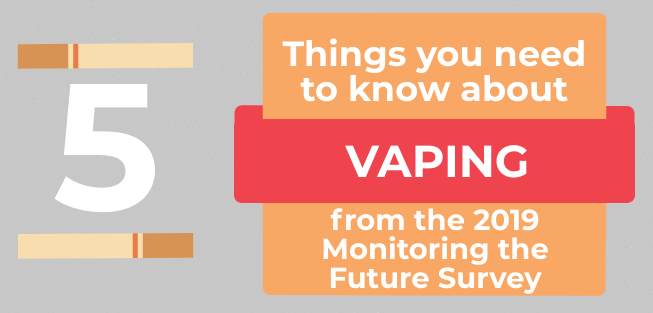
Vaping devices come in many forms and have various names, like e-cigarettes, e-cigs, vapes, or vape pens. The most popular brand that teens use is made to look like a USB memory stick, but these devices can also look like traditional tobacco cigarettes, cigars, pipes, or even commonplace items like pens. These battery-operated devices produce an aerosolized mixture that can contain nicotine, marijuana, flavorings, and other harmful chemicals.
Most vaping devices include a cartridge or pod that holds a liquid solution, a heating element, a power source, and a mouthpiece that—when puffed—activates the heating element and vaporizes the liquid in the cartridge. The resulting aerosol or vapor is then inhaled.
How does vaping affect health?
Although many believe that vaping is a safer alternative to combustible cigarettes, vaping exposes the lungs to a variety of toxic chemicals, carcinogens, and toxic metal nanoparticles. In fact, there were more than 2,000 lung injury cases associated with vaping (in children as young as 13) and 50+ reported deaths in 2019. Furthermore, the Food and Drug Administration (FDA) has warned the public to stop using vaping products that contain THC, are obtained off the street, or have been modified. Vaping nicotine is highly addictive, and its use has even been linked to type 2 diabetes in animal models.
Can it help a person stop smoking?
Currently, there is not enough evidence about the safety of e-cigarette use to help people quit. But if a patient is interested in smoking cessation or quit aids, seven options have been approved by the FDA as safe and effective to recommend.
Vaping and teens
According to the 2019 Monitoring the Future Survey, the numbers of adolescents vaping nicotine and marijuana have sharply increased in the past year, with a host of associated, alarming trends (see infographic) that are particularly concerning because these drugs affect teens’ brains differently than adults’. Exposure to nicotine during adolescence can impact learning, memory, and attention and increase teens’ risk for future addiction to other nicotine products. Research also suggests it can prime the brain’s reward system to make other drugs—like cocaine—more pleasurable, increasing risk of addiction to other drugs. In addition, teens who use nicotine are at increased risk for developing mood disorders and permanent impulse control problems.
The Family Physician’s Role
Family physicians can use their unique relationships with patients to educate them about vaping and screen them for use. Below are several steps family physicians can take to help patients; the resources listed are from NIDAMED, an initiative that brings science-based information on addiction to clinicians:
By asking patients about vaping and educating them on the effects of nicotine and marijuana on the body, family physicians can take a step toward combatting the vaping epidemic by helping patients make informed decisions. For more actionable information on drug screening, addiction, and treatment, visit NIDAMED.